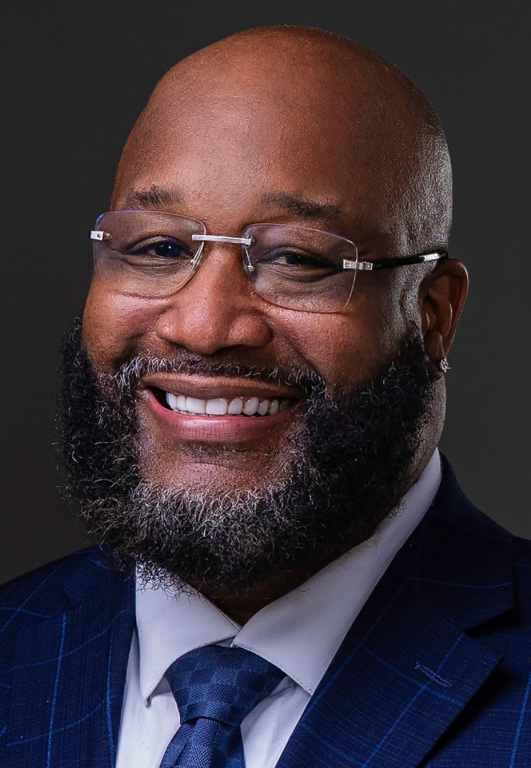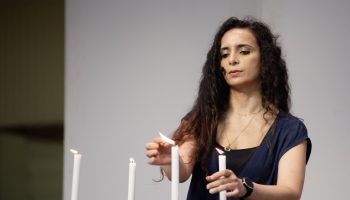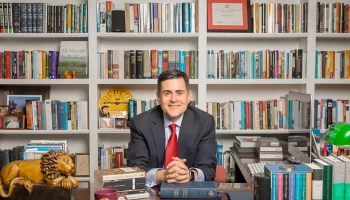
A community-based activist recognized several times by President Joe Biden, Chico Tillmon oversees the nation’s first community violence intervention program working with leaders on the ground in marginalized communities — leaders who then go on to affect positive change through the skills they develop.
Tillmon is lecturing at 10:45 a.m. today in the Amphitheater, closing the week’s theme of “Our Greatest Challenges (That We Can Actually Do Something About).”
Tillmon is currently the executive director of the Community Violence Intervention Leadership Academy at the University of Chicago Crime Lab. He was previously executive director of READI Chicago — a Heartland Alliance initiative that provides employment combined with cognitive behavioral therapy and skill-building to those at the highest risk for gun violence — and YMCA of Metro Chicago’s Youth Safety and Violence Prevention programs.
Tillmon grew up on the westside of Chicago, and brings both his life experience and career experience to his work as a leading national consultant and training facilitator on violence prevention, reentry, and nonprofit work.
His Chicago neighborhood of Austin is “a community that’s vulnerable, disinvested and has been plagued with violence over the last half a century,” he said.
Tillmon has been system-impacted himself; when he was released from prison, he “wanted to do something to change the conditions in our community.” He leverages relationships built while he was incarcerated, in addition to the relationships he has in his community, to impact further change.
Those relationships are an integral aspect of his work. Knowing these people, growing up with their parents, their relatives, makes the work real, he said.
“When you know that community, you’re able to relate to people and speak the language of other people — but also you’re able to look at the assets in the community, as well, and build upon those strengths,” Tillmon said. “Many people come in with a cookie-cutter approach to communities, but if you don’t understand what already exists, what’s already going well, then you might find yourself duplicating the efforts that already exist. You may just need a little coaching, a little training, or a little support to have the level of impact that’s necessary.”
In working with the community and being part of it, Tillmon has seen that individualized care — as opposed to criminalization — and a trauma-informed response can alleviate mental strain for people, and help disrupt larger cycles. Recognizing that trauma-informed care has been developed through the “lens of working with middle-class individuals who could receive care, but live in a safe environment,” means understanding that trauma in marginalized communities must be addressed in a different way.
He likens individuals in a community most impacted by the disease of violence to soldiers in war — “you’re teaching them trauma-informed care, but every day they’re on the battlefield.”
The roots of these issues go deeper than what’s seen on the surface; in his work, Tillmon deals with generational trauma and epigenetics exacerbating problems marginalized communities face — “particularly when you think about the African American community, it went from slavery to Jim Crow to the mass incarceration push,” he said. “We’re still trying to deal with this dichotomous America.”
“When you think about these caste systems, where people are stuck in impoverished cycles, in some situations the poverty trend just continues because there’s poor school and poor education,” Tillmon said. “Poor education, or access to it, continues from generation to generation. And also, we know through genetics, trauma can be passed down — whether it’s anxiety, depression and all those things that are a result of an individual being exposed to high doses of trauma.”
In his lecture, Tillmon wants to emphasize the importance of playing on the strengths and partnerships that already exist in a community’s ecosystem, as opposed to placing the burden of violence intervention on a single organization or entity. No singular institution, like the police, can address the range of underlying issues like substance abuse disorder, mental health issues, or lack of food or housing.
“(Resolving the multilayered problems in the community) is going to take a public health approach, which means all hands on deck, all working together to resolve the problem around violence; as opposed to just depending upon the government — meaning (Chicago’s) Office of Violence Prevention,” Tillmon said. “So you do need partnerships in order to move the body of work, or else the people in the CVI space will just be putting band aids over the problem and it’ll resurface. Each individual might need different and multiple things.”
Tillmon has been invited to the White House several times — the first time being the day it re-opened to staff after pandemic restrictions lifted. Being recognized by Biden in the Rose Garden during an event on gun violence prevention was simply overwhelming. Tillmon said he literally cried “to see the president acknowledge our work — we were honored.”
“COVID-19 really catapulted us into a different light. When America couldn’t really wrap its arms around COVID, because they had ostracized a particular population for so long, they didn’t have access to individuals at the highest risk to get them to adhere to the CDC guidelines,” Tillmon said. “We were able to show our value by being able to not only access that population, but to convince them to get involved and adhere to those CDC guidelines. That’s what really showed — not just the White House, but the world — the power and the advantage of working with individuals in this space.”
There’s a level of “connection and intimacy” in this work, and in the progress achieved through any successful violence intervention, because for Tillmon, it’s personal — of the 109 people shot in Chicago over the Fourth of July holiday, 19 died, and Tillmon knew three of them.
“There needs to be a mass movement to change social norms, what’s acceptable,” Tillmon said. “People aren’t stagnant.”




